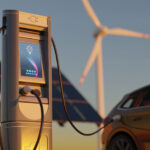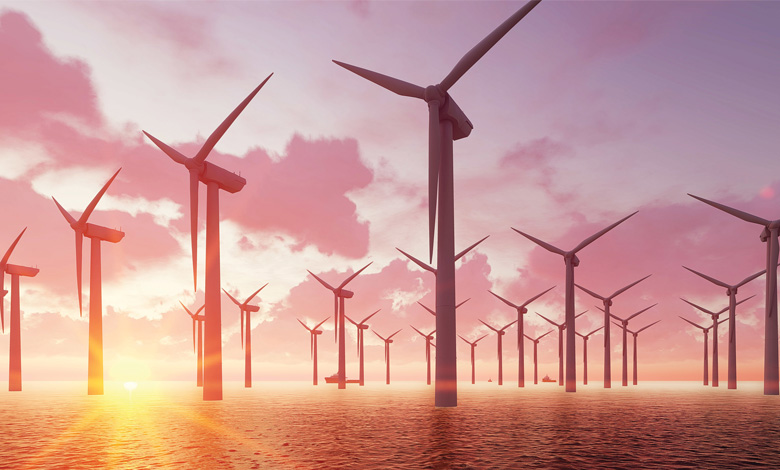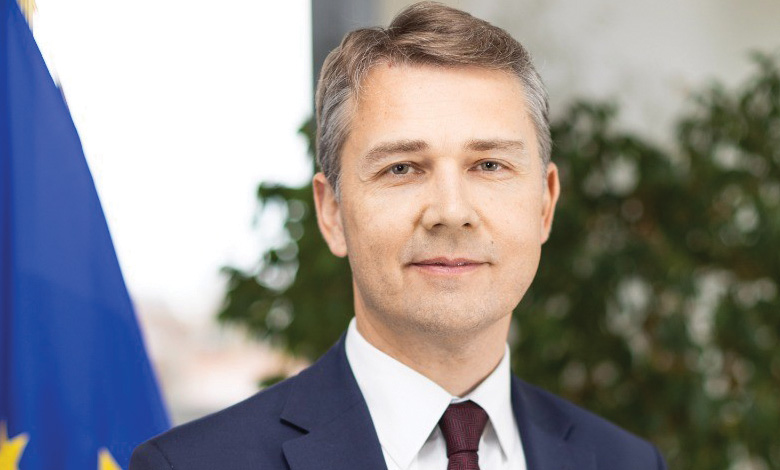
Powering Ireland’s energy transition with renewable gases
14th October 2025
The role of smart charging and V2G
14th October 2025Secure, clean, and affordable energy for Europe

Lukasz Kolinski, head of unit for the Directorate General of Energy at the European Commission, outlines the EU’s energy transition targets and the measures that must be taken to achieve them.
Kolinski begins by commending Ireland for publishing the revised National Energy and Climate Plan (NECP) 2021-2030. Published in July 2024, it set a target of a 43 per cent share of renewables in the energy mix by 2030. This aligns with the EU’s commitment to achieve a 42.5 per cent share under the Renewable Energy Directive. The European Commission has also set an aspiration to achieve a 45 per cent share, double its current share.
Kolinski notes that the EU has adopted a legal framework to develop a decarbonised and integrated energy system with an aim to achieve climate neutrality by 2050. The head of unit asserts that this system “will be more efficient and less wasteful”, as the ‘energy efficiency first’ principle is embedded in the legislation. Kolinski says: “The new system will be based on renewable energy to a greater extent than the existing one.”
“We have high ambition, and the pace of deployment needs to accelerate across end-use sectors and on the supply side to realise it.”
Developing renewables
Development of wind and solar energy will be crucial in achieving a more renewables-based electricity system, enabling the conversion of industrial processes, heating, and vehicle to electricity. Kolinski states that Ireland “is clearly among the frontrunners of the European clean energy transformation”, due to its targets for wind and solar, electric vehicles, and heat pumps for 2030 and beyond.
“We will also focus on the modernisation of our heating systems,” states Kolinski. “Currently, we push the penetration of renewable heat through heat pumps and promote better use of waste heat which remains unexploited by large industrial sites and data centres.”
Kolinski says the energy system the EU is developing will “be more flexible and integrated”, with greater interaction between energy carriers. He adds: “That will increase the cost efficiency of the system. This is important given the investment challenge we are facing.

“Finally, we are building a more secure energy system, less reliant on volatile imported fossil fuels. For example, renewables have played a significant part in the effort to replace Russian fossil fuels following the invasion of Ukraine.”
Strong interconnections to the European market will be critical to achieve high levels of renewables, says Kolinski who outlines that the rollout of renewables has increased in recent years. Solar capacity in the EU increased from 272.5GW in 2023 to 338GW in 2024. The EU increased its wind capacity from 218.1GW in 2023 to 231GW in 2024.
Accelerating delivery
Kolinski identifies challenges that must be addressed to accelerate the delivery of renewables: “Permitting processes are long and complex. They create uncertainty for developers and investors. Our power grids are not yet capable of powering an electrified economy. Expansion of renewables will require an expanded and flexible grid to avoid excessive curtailment.”
He asserts that the transition to renewable electricity is not happening fast enough in heating and cooling or transport, adding that there are bottlenecks in the value chain, partly due to a lack of qualified installers for solar panels and heat pumps.
“Renewables are not our only focus. We also will continue to prioritise energy efficiency. If we forget about energy efficiency, it will be even harder to reach renewables goals,” he adds.
Kolinski states that new permitting rules, which member states were obliged to transpose into national legislation in July 2025, are the “cornerstone of a faster rollout of renewables”. He commends Ireland for its adoption of the Planning and Development Act 2024, saying: “It is impressive to see the full revamping of Ireland’s planning and consenting notably for offshore renewables and marine spatial planning.”
The head of unit also notes that more efficient permitting is key to enabling energy storage development, and for power grids. He identifies both as necessary in enabling the acceleration of renewable generation. However, challenges such as prices falling into negative territory persist. Kolinski identifies increased flexibility and interconnectivity as key to addressing this.
Addressing the issue from an Irish perspective, he states: “EirGrid is putting a lot of effort into hardware and digital infrastructure to make your system able to absorb these high shares of viable renewables. We need other member states to do the same.”
Moving forward
Kolinski states that the Renewable Energy Directive also sets target with aims to increase the deployment in end-use sectors such as heating and cooling, buildings, transport, and industry. He contends that “the pace of deployment of renewables in these sectors is not ideal yet”.
Welcoming the “growing interest” in the topic of district heating and cooling in Ireland, the head of unit says: “It has enormous potential, not only for decarbonisation, but also for thermal storage to provide flexibility to the power system. It could offer a direct use for waste heat from data centres in particular.”
Kolinski also insists that the Commission will advocate for the use of renewables in industry and deployment of renewable fuels of non-biological origin such as hydrogen. He adds that the Commission will continue promoting the sustainable use of bio energy.
Kolinski also discusses what more needs to be done to increase deployment of renewables. He acknowledges that there is a “growing skills shortage in Europe”. Particularly in installers of heating and cooling systems, solar photovoltaics, and heat pumps.
“This is becoming a major bottleneck which could hamper our ability to reach our targets. We will focus on this in the coming years,” says Kolinski.
The head of unit stresses that implementation of the reformed electricity market design is central to unlocking the energy market’s potential. New electricity market design rules were adopted in May 2024. EU legislation amended under the reform includes the Electricity Directive and Electricity Regulation, the ACER Regulation, the REMIT Regulation, and the Revised Renewable Energy Directive.
“On one hand, it improves consumer rights and protection,” says Kolinski. “On the other, it supports the investment needed for the energy transition, enhances stability and productivity, and contributes to the competitiveness of the EU economy.”
Continuing to explore what needs to be achieved in line with the energy transition, Kolinski says: “We need to ensure that the European manufacturing necessary for achieving our net zero ambition is adequate and that we reduce dependency on critical raw materials.”
He identifies the Net-Zero Industry Act, which entered into force in June 2024, as crucial to realising this ambition. The Act aims to enhance European manufacturing capacity for net zero technologies and their key components. Kolinski also states that the Critical Raw Materials Act, which entered into force in May 2024, is crucial for Europe’s energy transition. The Act is designed to strengthen value chains for critical raw materials.
Kolinski insists that implementation of this legislative framework throughout member states is essential. He acknowledges that this is challenging at local, regional, and national level, and says the EU will provide support to member states. The head of unit identifies the Clean Industrial Deal as vital in supporting the energy transition.
The Clean Industrial Deal was introduced in February 2025 and is intended to deliver affordable energy, boost demand for clean products, finance the clean transition, improve circularity and access to materials, foster global collaboration, and unlock skills and quality jobs.
Concluding by addressing Ireland’s position in the European energy transition, Kolinski states: “In this context, Ireland’s ambition is impressive. Clearly the challenges remain and there is little time left to 2030. For this reason, I welcome Ireland’s resolve and your commitment to the fast deployment of renewables. I assure you that the Commission and other member states will work with you to support your efforts and collectively move towards the high ambition for renewables.”
